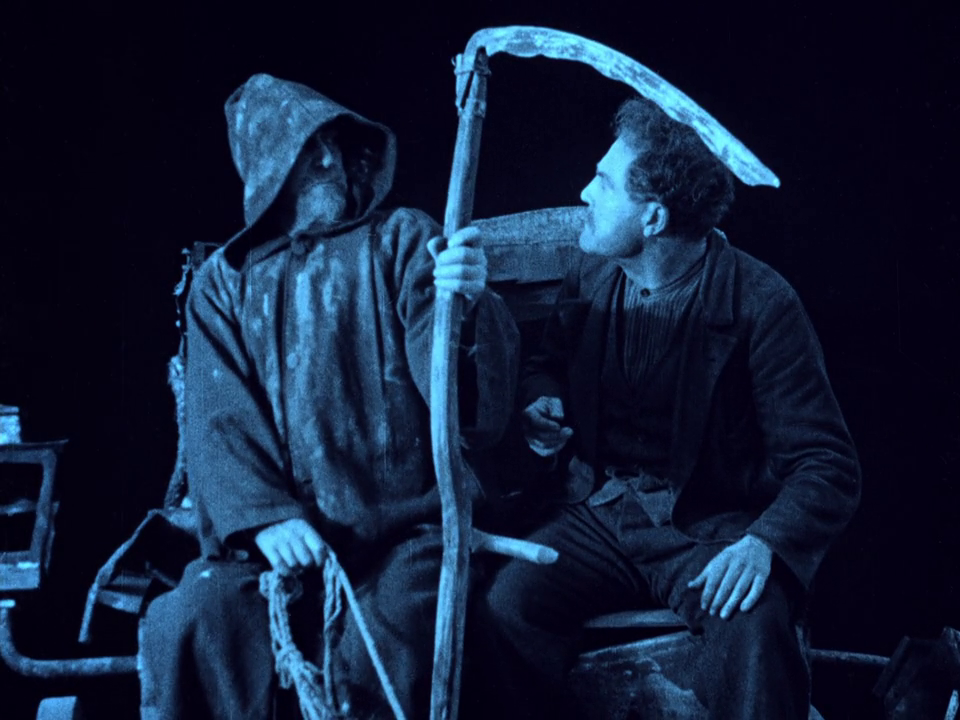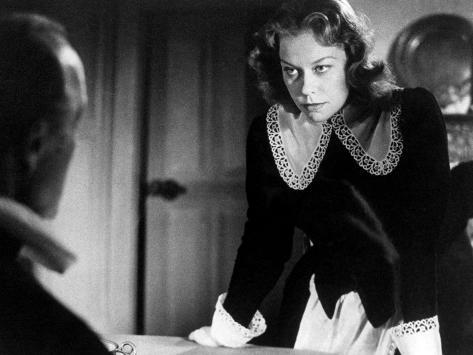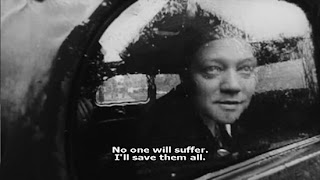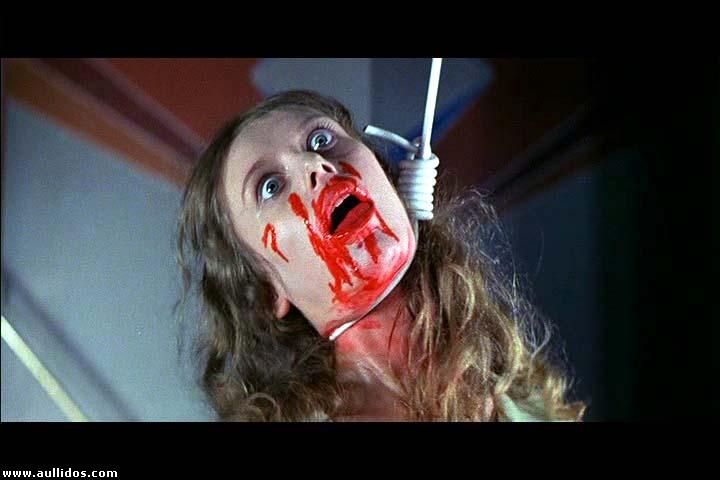To help you celebrate Halloween a bit better, I've compiled a list of foreign films that are either horror or just downright creepy. I asked my brother (who watches a lot more films than I do) to help me come up with this, and his blurbs are listed with his initials: BS (as opposed to mine, which are DS). This list is by no means meant to be exhaustive, but I think you'll find a lot to choose from here.
Some of these are silent films, and it would be a shame to leave them off the list just because there is no spoken foreign dialogue. Plus, if you can find a copy of any of these from the original country, then you should be able to read the intertitles in the target language. Many of these are available from the Criterion Collection on DVD (or Hulu). A good number of them are available on YouTube as well, if you look hard enough.
Some of these are silent films, and it would be a shame to leave them off the list just because there is no spoken foreign dialogue. Plus, if you can find a copy of any of these from the original country, then you should be able to read the intertitles in the target language. Many of these are available from the Criterion Collection on DVD (or Hulu). A good number of them are available on YouTube as well, if you look hard enough.
Figure de Cire (The Man with Wax Faces)
Director: Maurice Tourneur
Country: France, Language: Silent, Run time: 11 min, Year: 1914.
A quick tour through a wax museum ends badly. The available print is so damaged that the warped quality of the film seems to constantly invade the scene with ghosts from another dimension. BS
Умирающий лебедь (The Dying Swan)
Director: Yevgeni Bauer
Country: Russia, Language: Silent, Run time: 49 min, Year: 1917.
Das Cabinet des Dr. Caligari (The Cabinet of Dr. Caligari)
Director: Robert Wiene
Country: Germany, Language: Silent, Run time: 67 min, Year: 1920
For me, this film is all about the arresting expressionist visuals, but it is also about a murderous somnambulist, the doctor that pulls his strings, and madness. DS
Körkarlen (The Phantom Carriage)
Director: Victor Sjöström
Country: Sweden, Language: Silent, Run time: 93 min, Year: 1921
Last man to die during the year automatically has to take over the role of grim reaper for the next one. You would think that upon hearing this on New Year's Eve, the film's protagonist would try really hard not to die that day. Only then the movie would only be five minutes long. BS
Häxen (Häxen: Witchcraft Through the Ages)
Director: Benjamin Christensen
Country: Sweden, Language: Silent, Run time: 87 min, Year: 1922
A bizarre amalgam of history lesson, modern parable, and special effects extravaganza, Häxan frightens with vivid imagery as it presents its thesis on witchcraft, superstitions, and the occult through slideshow, visual essay, and spirited reenactments, drawing parallels with then (and often now) relevant social issues and pleading the case for reason in the face of inexplicable phenomena. BS
Nosferatu, eine Symphonie des Grauens (Nosferatu, a Symphony of Horror)
Director: F.W. Murnau
Country: Germany, Language: Silent, Run time: 81 min, Year: 1922
An unauthorized German-remake of Dracula with some all around frightening visuals. Plus, Western Slovakia stands in for Transylvania, with the Orava castle being used as Count Orlak's castle. DS
狂った一頁 (A Page of Madness)
Director: Teinosuke Kinugasa
Country: Japan, Language: Silent, Run time: 70 min, Year: 1926
One of the earliest known surviving Japanese films, a visual approximation of the mind of a madman. BS
La Chute de la Maison Usher (The Fall of the House of Usher) Director: Jean Epstein
Country: France, Language: Silent, Run time: 63 min, Year: 1928
This version of the Edgar Allan Poe tale (the too loose adaptation of which prompted Luis Buñuel to quit as assistant director) is a slow-burning visual feast of spectral illusions and creepy creakings at the titular house of Usher, artfully evoking the trauma of watching a wife slip away into dementia and death, and all culminating in a transcendental, impressionistic maelstrom of fog, lights, and horror. BS
Vampyr
Director: Carl Theodor Dreyer
Country: Germany, Language: German, but mostly intertitles, Run time: 75 min, Year: 1932
For having nominally created one of the great enduring classics of vampire lore, Dreyer seems less concerned with the mythology surrounding those rascally creatures of the night than with sustaining a general sense of dread that could easily be transplanted to a film devoted to any other class of ghoul. In fact, the subtitle to Murnau's Nosferatu may have been more apt here: A Symphony of Horror. BS
Une Nuit sur le Mont Chauve (Night on Bald Mountain)
Director: Alexander Alexeieff & Claire Parker
Country: France, Language: None, Run time: 8 min, Year: 1933
Der Student von Prag (The Student of Prague)
Director: Arthur Robison
Country: Germany, Language: German, Run time: 87 min, Year: 1935
Man comes to regret not having agreed to more precise terms in his deal with the devil. I love this movie so much. BS
Vredens Dag (Day of Wrath)
Director: Carl Theodor Dreyer
Country: Denmark, Language: Danish, Run time: 110 min, Year: 1943
In a small town in Denmark where accusations of witchcraft run rampant, an older pastor marries a young woman in exchange for not burning her mother at the stake. In true Dreyer fashion, the ending is as chilling as it is ambiguous. DS
Spalovač Mrtvol (The Cremator)
Director: Juraj Herz
Country: Czechoslovakia, Language: Czech, Run time: 95 min, Year: 1969
After the Nazis have occupied his Czech homeland, a smalltime funeral director is all too eager to prove to them his mettle. You seriously need to watch this movie right now. (There is a little adult content.) Also recommended is the same director's Morgiana. Also, Valerie and Her Week of Wonders is supposed to be a great Czech vampire film, though I haven't seen it yet. BS
La Femme qui se poudre (The Woman Who Powders Herself)
Director: Patrick Bokanowski
Country: France, Language: None, Run time: 18 min, Year: 1972
A
catalogue of vaguely creepy Lynchian visuals, including, yes, a woman
powdering herself. BS
La Cabina (The Telephone Box)
Director: Antonio Mercero
Country: Spain, Language: Spanish, Run time: 35 min, Year: 1972
Man gets trapped in phone booth, learns patience, is not rewarded for this. BS
Suspiria
Director: Dario Argento
Country: Italy, Language: English with some German and Russian, Run time: 92 min, Year: 1977
This one is technically a cheat since the movie is mostly in English. I'm allowing it though because Italian films back then dubbed all their dialogue anyway for the target market, even in English, so if you bought a copy of the Italian version, it would be just about the same, with the same overpowering prog-rock soundtrack to boot. Plus it features traveling to Europe to study, which seems fitting for this blog. The only thing is, the school in Suspiria also specializes in the occult. As such I imagine this incredibly gory film would probably be a more accurate representation of what Hogwarts would actually be like. DS
La Ville des Pirates (City of Pirates)
Director: Raul Ruiz
Country: France/ Portugal, Language: French, Run time: 111 min, Year: 1983
May or may not be just a dream that I had once, with actually little to no pirates. Assuming it exists, you seriously need to watch this movie right now. BS
Riget (The Kingdom)
Director: Lars von Trier
Country: Denmark, Language: Danish, Year: 1994
This finally converted me over to von Trier. Delicious hospital-set horror comedy, somewhat episodic like Twin Peaks. BS
Outer Space
Director: Peter Tscherkassky
Country: Austria, Run time: 10 min, Year: 2000
A slasher film where the victim is the film stock. BS
Låt den rätte komma in (Let the Right One In)
Director: Tomas Alfredson
Country: Sweden, Language: Swedish, Run time: 115 min, Year: 2008
Martyrs
Director: Pascal Laugier
Country: France, Language: French, Run time: 99 min, Year: 2008
My friend Alissa recommended this for me, but I haven't been able to see it yet. From what I can tell it is an incredibly bloody revenge horror thriller.
Katalin Varga
Director: Peter Strickland
Country: Romania, Languages: Hungarian and Romanian, Run time: 82 min, Year: 2009
More of a revenge thriller than a horror film, though the ending is quite horrific. Also, it still takes place in Transylvania, which is enough to earn it a spot on this list. DS
So that's our list. What are your thoughts? Is there anything we missed? Have you seen any of these? What's your opinion? Feel free to leave a comment, if you have.
So that's our list. What are your thoughts? Is there anything we missed? Have you seen any of these? What's your opinion? Feel free to leave a comment, if you have.





















